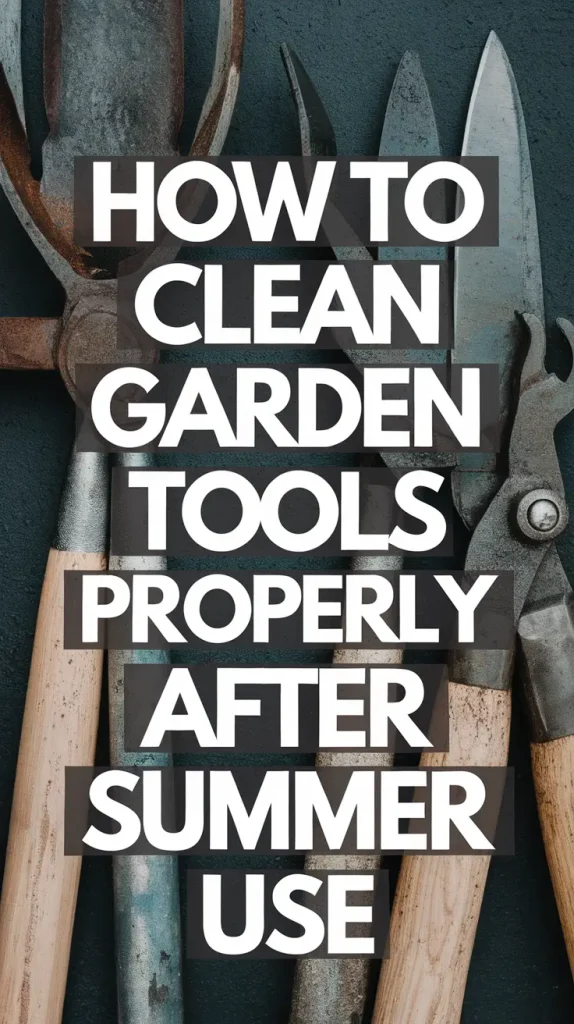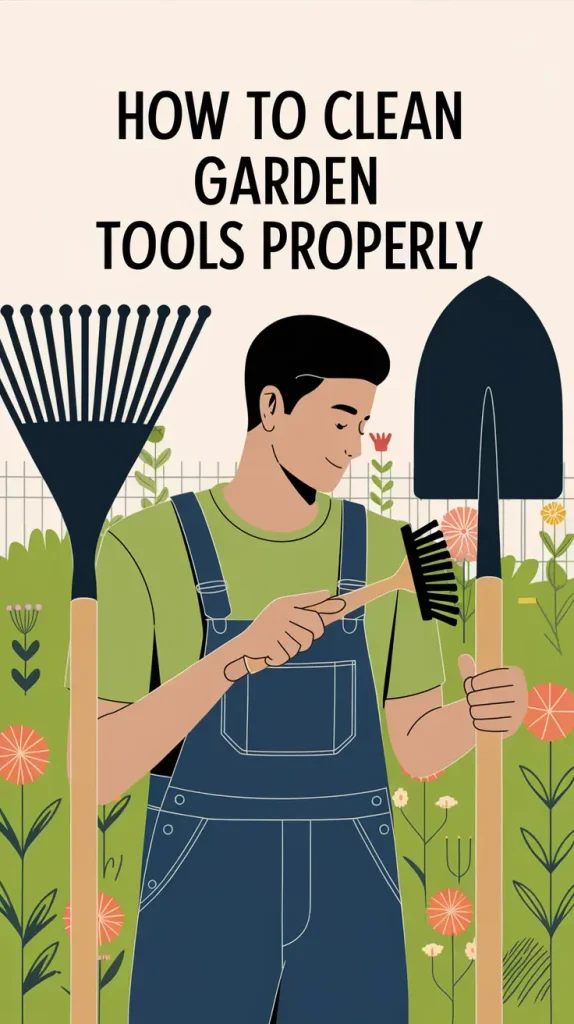How to Clean Garden Tools Properly After Summer Use – My 2025 Routine

Have you noticed your garden tools at the end of summer and thought “what on earth is this?” My trusty tools now seemed far more worn and damaged than anything from a neglected garden shed.
After a long summer full of planting, and digging, garden tools endure a lot of wear and tear like mud caked pruners, rusty spades, and shears suffering from dulling. For most enthusiastic gardeners, this is a nightmare. However, for many, including myself, the battle against neglecting tools is simply slapping the label of “dealing with.”
Here is the tip: ignoring tools after summers done with them can lead to ways such as dulling, rusting, and in some scenarios, complete breakage. After enduring this once, the next few seasons I learned the hard way not to neglect my tools. Fortunately, I was able to figure out a system that always keeps my reliable tools in great shape enduring all kinds of weather. This article will explain my process for flawless gardening of spinning them through the seasons.

Why It Is Important To Clean The Garden Tools After Summer
There was a time when I would simply “clean” my gardening tools by rinsing them under water. I would think to myself, “What’s the harm? It’s just some dirt.” That thinking changed when my favorite pruning shears rusted shut from moisture after a week’s worth of rain.
Maintaining gardening tools goes beyond their superficial cleanliness; proper maintenance optimizes functionality and prolong their lifespans. Tools left unchecked for long periods of time can accumulate lots of grime and sap, which breeds unwanted bacteria and fungi. Entering one’s plants with a tool infected with said bacteria can cause a ton of issues. Moreover, tools that are not maintained can suffer from irreversible damage in the form of rust and corrosion.
Here’s some additional pointers on why proper tool hygiene is important:
- Prevents rust and corrosion.
- Reduces the risk of spreading plant diseases.
- Maintains sharpness and efficiency.
- Saves money by extending tool life.
While from a distance it may seem like the extra work “cleaning tools” summer is put in is unjustified in scale, this is not the case. Allow me to guide you through my simple approach to keeping tools in pristine condition which does not involve me spending heaps of money on expensive cleaning products.
3-Step Process to Clean Your Gardening Tools
While trying to take care of my tools, I found that I didn’t need any unique process. Like many people, I wanted something that was quick and effective. After trying several methods, I found that this simple three-step process worked best.
Step 1: Remove The Dust And Dirt From Tools
This was the part that I wasn’t expecting to provide me so much satisfaction — peeling off mud and dried grass. To solve the issue, I usually use a stiff brush to remove clumps of dirt and plant remaining. In fact, for the hardest spots, old putty knives do wonders.
Tip: Wooden handles should never be soaked in water. This will result in swelling as well as cracking. For best results, wipe down with a damp cloth.
Step 2: Clean and Sanitize
As mentioned before, scrubbing is something that I thought I would never enjoy doing. However, with the proper combination of warm water, white vinegar, and soap, things become much more pleasant. Not only does vinegar help with cleaning, but it also leaves a sanitized surface for the tools.
- Wash metal parts using a bucket of warm, soapy water.
- For extra disinfection, add a few tablespoons of white vinegar.
- Scrub the surface with a sponge or scouring pad, paying particular attention to the blades and joints.
- Rinse thoroughly and allow to air dry.

Step 3: Sharpen and Oil
Regularly sharpening my tools changed everything — gardening became so much easier after this. Everything is more difficult when using dull blades, whether it’s pruning or digging. For this, I use very basic equipment, a sharpening stone, and lightly coat it with machine oil to prevent rust.
- While sharpening, stroke the sharpening stone along the edge of the blade at a bevel.
- Clean away any shavings with a clean towel.
- Put a few drops of oil on the metal parts to protect them and keep corrosion at bay.
Common Mistakes to Avoid When Cleaning Garden Tools
I must admit, I have made some mistakes when cleaning my tools, and learned from each one. Here are the three biggest missteps that you should avoid:
- Leaving Tools Wet: I remember once finding my tools dried up in my yard. To my shock, they had rusted overnight. As a rule, always dry them thoroughly.
- Harsh chemicals: Tried Bleach once? Well it left my tools dull and pitted. Stick to mild soap and vinegar.
- Skipping the Oil: Clean tools can also rust, especially if they are not coated with oil, which goes a long way.
Storing Garden Tools After Cleaning
After performing diligent cleaning, proper storage is just as critical. My garden tools are no longer tossed into a corner — tangle-prone handles and chipped blades are a thing of the past. In my new organization system, I store them as I said, and it has made a massive difference.
Proper Storage Guidelines:
| Tool Type | Storage Method | Extra Tip |
|---|---|---|
| Hand Tools | Hang on hooks or pegboards | Keep them at eye level for easy access |
| Pruning Shears | Wrap in a cloth and store in a box | Keep in a dry, cool place |
| Rakes and Shovels | Stand upright or hang on a wall | Avoid stacking heavy items on top |
| Power Tools | Store in original cases if possible | Remove batteries to prevent corrosion |
Cleaning and Maintenance Tips for the Next Gardening Season
Clean tools require some believe maintenance takes time. In reality, simple and effective tool maintenance provides outstanding efficiency.
- Regular Checks: Inspect tools prior and post to the indicated working hours.
- Short Clean: Brushes dirt immediately post gardening activities regardless of the duration.
- Monthly Overhauls: Apply stains and verify logbook for potential wear.
Efforts aimed at encouraging early effort establishment might counter-intuitively foster the opposite outcome. Preparing far in advance promotes effortless mental decision-making later on.
Final thoughts
So, this is a really straightforward routine for post-summer maintenance of your garden tools. A few seasons were spent figuring it out, but after turning it into a habit, I certainly didn’t regret doing so.
Looking after your tools can come across as an additional step, but saves time in the future. With tools in good condition, plants are easier to maintain, making gardening much more pleasurable.

